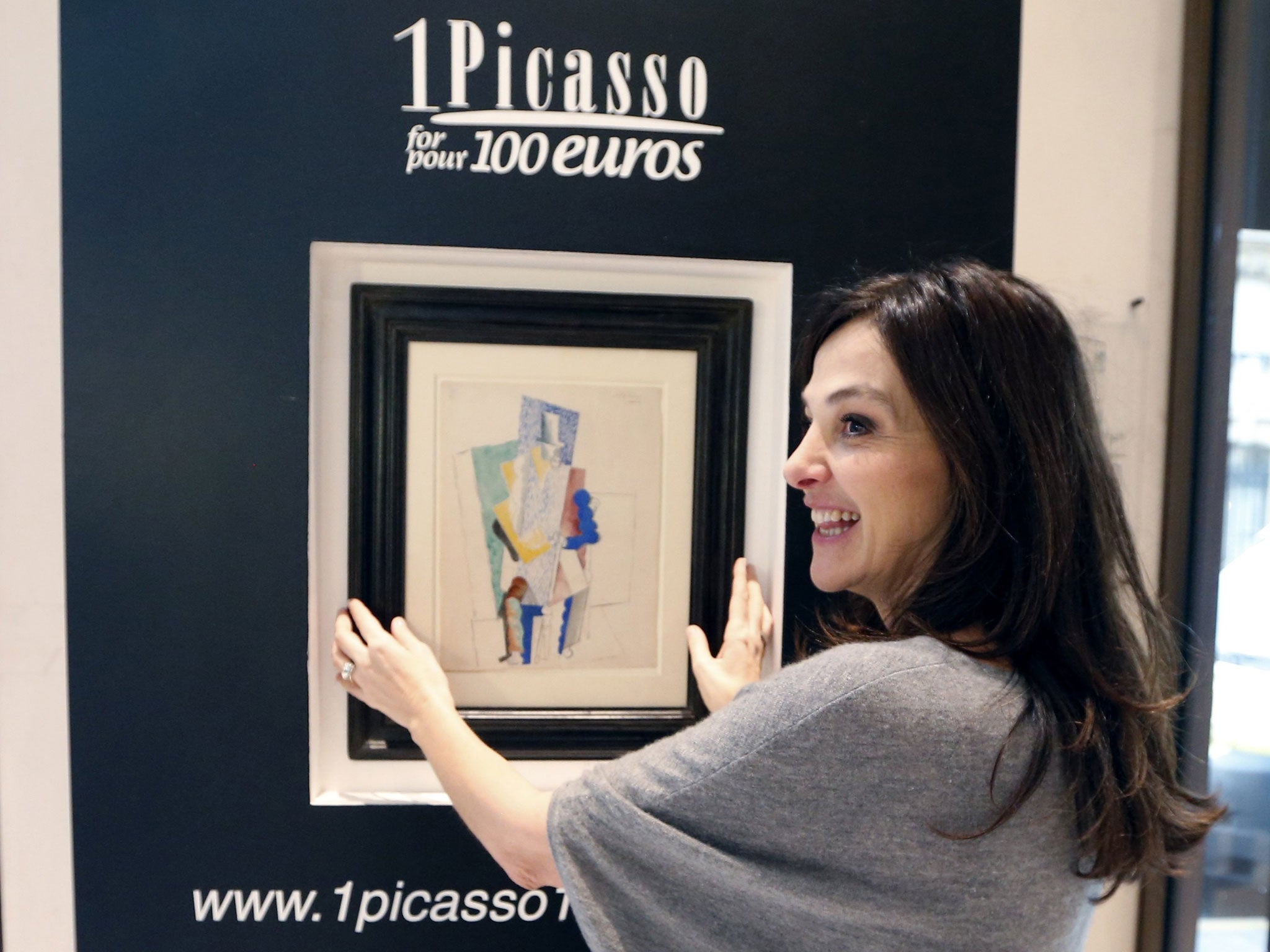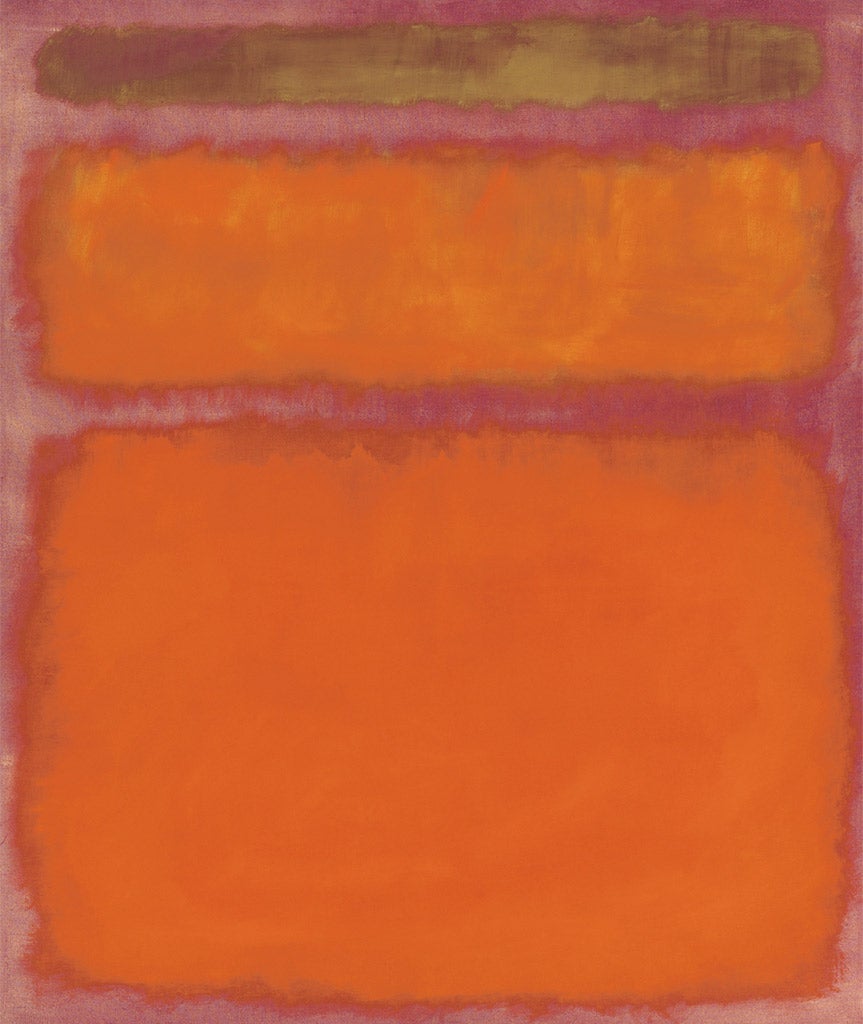Picasso for 100 euros? Maybe it’s time I started buying raffle tickets after all
If there’s one work of art I could own, it’s a yellow and orange Rothko

Your support helps us to tell the story
This election is still a dead heat, according to most polls. In a fight with such wafer-thin margins, we need reporters on the ground talking to the people Trump and Harris are courting. Your support allows us to keep sending journalists to the story.
The Independent is trusted by 27 million Americans from across the entire political spectrum every month. Unlike many other quality news outlets, we choose not to lock you out of our reporting and analysis with paywalls. But quality journalism must still be paid for.
Help us keep bring these critical stories to light. Your support makes all the difference.
I’m not usually a gambling woman, because I am not one of life’s natural winners, unless the game is Scrabble. I’ve never even been inside a casino, so if James Bond ever wants to impress me, he’s going to have to meet me in a museum or the park, or somewhere else where people are wearing sensible shoes and warm coats. When those books of raffle tickets arrive from Crisis or a donkey sanctuary, I just donate the money and throw the tickets away. Which, now I come to think of it, has probably reduced my chances of ever winning anything in a raffle still further.
But last week, I was genuinely tempted to buy a lottery ticket for €100. I would have had one in 50,000 chance of winning a Picasso (L’Homme au Gibus), worth a shiny million dollars. Everything about this lottery was brilliant. The chance to win a Picasso is infinitely more exciting than a cash prize would be. Don’t get me wrong – I’d like a huge cheque – but there is something amazing in the idea of owning a work of art, albeit a minor one, by a major artist.
On top of that, the money raised (€5m, if every ticket is sold), goes to an organisation determined to save the ancient city of Tyre, in what is now Lebanon. If there is a more romantic thing to raise money for, I can’t imagine what it is. Tyre was the home of Dido, driven by her murderous brother, Pygmalion, from there to Carthage, where she fell into a doomed love affair with the Trojan prince, Aeneas. Virgil’s version of her story is the most beautiful part of Aeneid (which isn’t exactly short on high points). So to call the campaign to save it a good cause rather undersells it.
In the end, I couldn’t bring myself to buy a ticket, because I realised that losing out on a Fiat Punto (which is what the donkeys occasionally offer) is easy: I don’t even have a parking space, so what would I do with a car? But losing out on a Picasso would really have hurt. As it turns out, the winner was Jeffrey Gonano, a man from Pennsylvania who was looking for something to hang on his wall. Gonano works in the fire sprinkler business, which means that if even one person didn’t die in a fire because of his work, he’s contributed more to society than many art collectors.

Surely this is the right way for charities to raise money now. No more bathing in baked beans or pounding the streets on fundraising marathons: art investment looks like a lot more fun. In idle moments, I sometimes play the Thomas Crown game, when you work out which artwork you like so much you’d consider stealing it from a museum. For me, it’s a yellow and orange Rothko (currently held in a museum in Buffalo, which has probably just added my name to a list). I used to feel guilty that I wanted it so much: it goes against my belief that all great art should be where everyone can see it. But I only have to look at a reproduction of it to hear Nina Simone singing “Sinnerman” (the soundtrack to the great Thomas Crown heist scene) in my head.
And, now I’m on the subject, there’s a beautiful little bronze bird from Pompeii in the Capitoline Museum which I’d probably try to swipe on the same trip. He sits on an intricate bronze branch and he would fit in my handbag, no trouble at all. I’m clearly a recidivist in the making. But maybe it’s not entirely my fault if I keep thinking about taking artworks without the owner’s consent. Art theft is everywhere at the moment: from Donna Tartt’s The Goldfinch to Derren Brown’s crack team of pensioners who half-inched a Chapman Brothers painting from a seemingly secure gallery on Channel 4 last week. So perhaps I’m not alone in my fantasy of owning a masterpiece. Anyway, next time a piece of art is up for grabs, I’ll stop being a coward and buy a ticket. I’ll worry about the insurance later.
Season’s bleatings
Christmas cards can be a minefield of passive-aggression. There are the ones which arrive in mid-November, reminding you that you haven’t even thought about Christmas yet, and still have a mouldering pumpkin on the windowsill from Halloween. Then there are the ones which contain a round robin, explaining the many achievements of the children of someone you wish you’d never met. But all of these are knocked into a cocked party hat by Hammersmith and Fulham council, which sent out cards telling residents to pay their rent. Merry Christmas to you too.
Join our commenting forum
Join thought-provoking conversations, follow other Independent readers and see their replies
Comments